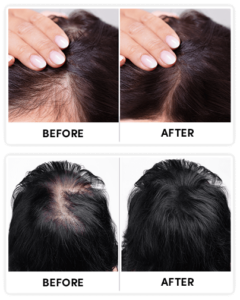Reversing Hair Loss: The Fast Treatment for Male Pattern Baldness You Need

Getting to Know Male Pattern Baldness
Male pattern baldness, also known as androgenetic alopecia, is something many guys face worldwide. It usually sneaks up on you, starting with a hairline that slowly inches back and thinning hair at the top. Over time, this can lead to more noticeable hair loss. Getting a grip on what this condition is all about is key to managing it well. While losing hair is part and parcel of getting older for a lot of folks, it can really knock your confidence.
Diving Into the Causes
At the core of male pattern baldness is a mix of genes and hormones. The main player here is dihydrotestosterone (DHT), which is a byproduct of testosterone that causes hair follicles to shrink, leading to thinner hair and eventually hair loss. If baldness runs in your family, chances are you're in line for it too.
Spotting the Symptoms
The signs of male pattern baldness can differ but usually kick off with a hairline that moves back into an "M" shape. Then, you might notice thinning at the top and around the temples, forming a kind of horseshoe pattern of hair around the sides and back. Catching these early signs means you can jump on the right treatment sooner rather than later.
How Baldness Affects Confidence
Hair is often seen as a sign of youth and energy, so losing it can hit your self-esteem and confidence pretty hard. For many men, going bald can make you feel self-conscious or even lead to depression. It's important to tackle these emotional challenges as much as the physical ones since your mental health is a big part of your overall well-being.
Tackling Male Pattern Baldness: Traditional Routes
When it comes to dealing with male pattern baldness, traditional treatments have been the mainstay. These include a combination of medications, surgeries, and lifestyle tweaks, each with its own ups and downs.
Medications and How They Work
Finasteride and minoxidil are the two big players in the medication world for hair loss. Finasteride blocks DHT production, while minoxidil is a topical treatment that boosts blood flow to hair follicles. They both work pretty well but need ongoing use and can come with some side effects.
Surgical Solutions and What to Consider
If you're after something more lasting, hair transplant surgery is an option. Techniques like follicular unit transplantation (FUT) and follicular unit extraction (FUE) move hair from thicker areas to thinner spots. They're effective, but keep in mind they can be pricey, and you need to think about recovery time and possible complications.
The Role of Lifestyle Changes
Leading a healthy lifestyle can really make a difference in slowing down hair loss. Eating a balanced diet, keeping stress in check, and avoiding harsh hair treatments can all help keep your hair healthier. While these changes alone might not bring back lost hair, they support any treatment plan you choose.
Why The Ancient Samurai Warriors Never Lost Their Hair…

guaranteed to work for any men or women out there...
Try this at homeQuick Fixes for Male Pattern Baldness
For those who want results fast, there are treatments out there promising quicker outcomes, which are especially appealing if you're keen to see changes in a hurry.
What Makes a Treatment Fast?
Fast treatments are all about delivering noticeable results quickly compared to the old-school methods. They often use cutting-edge technology or intensive therapies that zero in on the root causes of hair loss, offering a speedy response.
Perks of Rapid Treatments
Speed is the main draw of fast treatments. But they also usually come with less downtime, which is great if you're busy. Plus, they can boost your confidence quickly, which can positively impact your mental health.
Checking Out Success Rates
While speed is tempting, how well these treatments work can vary. It's important to look into success rates and remember that outcomes can differ depending on factors like how much hair loss you have, your genetics, and how faithfully you stick to the treatment.
Innovative Therapies for Fast Results
Some standout therapies are making waves in the fast treatment world, leveraging advanced tech to tackle hair loss effectively.
Low-Level Laser Therapy (LLLT)
LLLT is a non-invasive treatment using red light lasers to stimulate hair follicles, boosting cellular activity and blood flow to the scalp, which helps hair grow. It's painless, quick, and can be done at home with laser combs or caps, making it super convenient.
Platelet-Rich Plasma (PRP) Injections
PRP injections involve taking a small amount of your blood, processing it to concentrate the platelets, and then injecting it back into your scalp. These growth factors can kick-start hair follicles into action. While results can be impressive, you might need several sessions to get the best effect.
Stem Cell Therapy and What's Ahead
Stem cell therapy is a big deal in the hair loss treatment world. It involves collecting stem cells from your body, concentrating them, and injecting them into your scalp to wake up dormant hair follicles. Though still being tested, it holds exciting promise for the future of hair restoration.
Watch Your Hair Come Back FASTER Than You EVER Dreamed Possible

WITHOUT Expensive Medications, Lasers, or Painful Surgeries!
Learn moreNatural Ways to Boost Hair Growth
If you're more into natural remedies, there are plenty of ways to complement fast treatment options using nature's bounty to encourage healthier hair growth.
The Power of Essential Oils
Essential oils like rosemary, peppermint, and lavender are praised for their ability to improve scalp health and encourage hair growth. Massaging diluted oils into your scalp can help with blood circulation, potentially boosting hair growth over time.
Eating Right for Faster Hair Growth
What you eat plays a huge role in hair health. A diet packed with vitamins, minerals, and proteins can make a big difference in hair growth. Foods rich in omega-3 fatty acids, zinc, and biotin are especially good and can help support the hair restoration process.
Herbal Supplements: A Hit or Miss?
Herbal supplements like saw palmetto and ginseng are popular for their potential hair growth benefits. While science hasn't fully backed them, many people report good results. As with any supplement, it's wise to check with a healthcare provider before diving in.
Finding the Right Treatment for You
Selecting the best treatment for male pattern baldness involves weighing a lot of different factors. It's all about tailoring your approach to fit your unique needs and medical background.
Getting Advice from the Experts
Before you start any treatment, having a chat with a dermatologist or a trichologist can be invaluable. These pros can assess your situation, suggest the right treatments, and help set realistic expectations, so you can make smart decisions.
Being Aware of Side Effects
Every treatment has its potential side effects. Knowing what these are can help you weigh the pros and cons. Whether it's a medication, surgery, or natural remedy, understanding possible risks is crucial for safe and effective treatment.
Making Your Treatment Plan Your Own
Personalization is the secret sauce for successful hair restoration. A treatment plan that's customized to your specific condition, lifestyle, and preferences is more likely to get you the results you want. What works for one person might not work for another, so making it personal is key.
Top Trichologist: Do This To Your Scalp To Regrow A Full Head Of Hair

Completely natural and dirt cheap way that makes it possible for you to finally regrow all your hair back.
Watch free special videoKeeping Your Hair Healthy After Treatment
Once you've reached your hair goals, keeping your hair in good shape is essential. Post-treatment care is crucial for maintaining results and preventing further hair loss.
Staying on Top of Follow-Ups
Regular check-ins with your healthcare provider can help you keep tabs on your progress and tackle any new issues. These appointments are vital for tweaking treatment plans and ensuring your hair stays healthy.
Tips for Long-Term Hair Care
Having a solid long-term hair care routine can make all the difference. This means using gentle hair products, avoiding too much heat styling, and sticking to a healthy lifestyle. Consistent care can help maintain the gains you've made through treatment.
Keeping an Eye on Your Treatment Plan
Hair restoration is a journey. Monitoring how your hair is doing and being open to changing your treatment plan as needed can help ensure long-lasting results. Staying flexible and adaptable is key as new treatments and technologies emerge.
Looking Ahead: The Future of Hair Loss Treatments
The world of hair loss treatment is constantly changing. With advances in research and technology, new solutions keep popping up, offering hope to those dealing with male pattern baldness.
Exciting New Technologies and Research
From gene therapy to bioengineered hair follicles, the future is packed with potential. New technologies are paving the way for more effective and less invasive treatments, bringing us closer to a definitive cure for hair loss.
Genetics and the Promise of Personalized Medicine
Understanding the genetic factors behind baldness is key to developing personalized medicine. Tailoring treatments to an individual's genetic makeup could revolutionize hair restoration, offering more targeted and effective solutions.
Wrapping Up: Fast Treatments for Baldness
While the search for reversing hair loss continues, there's no magic bullet. The key is in finding a balance between traditional and cutting-edge approaches, customizing them to fit individual needs. With the right strategy, achieving fast treatment for male pattern baldness is within reach, boosting both your hair growth and confidence.






